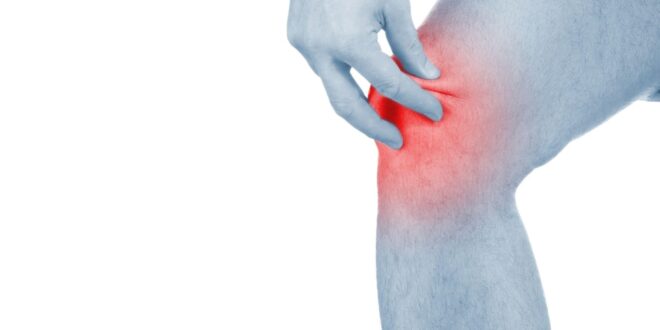Knee pain is caused by injury or disease. Osteoarthritis is the most common disease that affects the knee. Knee injuries often occur when a sudden movement or direct blow strains the knee past its usual range of movement. When an injury causes knee pain it is frequently associated with some form of knee cartilage tear, including ligament tears (ie anterior cruciate ligament tear) or meniscal tears.
In this article, we will discuss knee pain in-depth and how physical therapy can be administered by a team of PTs and physical therapist assistants to implement treatment.
If working as a physical therapist, or a PT Assistant, sounds like an interesting career to you then the easiest way to get started is to choose one of these online PTA programs to begin your education. From there you can always advance your career by entering into a PTA to DPT bridge program.
What Is Knee Pain
It is caused by injury or disease. Knee pain may reduce the endurance and strength of the muscles supporting the knee, affect the sore leg’s muscle control, and restrict movement.
Osteoarthritis is the disease that most commonly affects the knees. It is caused by the gradual wearing away of the cartilage inside the knee, which results in swelling and pain.
Knee injuries often occur when a sudden movement or direct blow strains the knee past its usual range of movement. This can happen in a motor vehicle accident, a fall, recreational activities, and sports. When an injury causes knee pain, it is frequently associated with tears in ligaments or knee cartilage. Repeated stress can also cause knee pain. This frequently takes place inside the kneecap and is also called patellofemoral pain syndrome. A bone can break right at the knee when there is extreme trauma, but this happens very rarely.
How Does Knee Pain Feel?
You might feel knee pain in various parts of the knee joint. It will depend on what problem you are affected by. If you can identify where your pain is located, this can provide your physical therapist with the information he or she needs to determine what has caused the pain.
How Is Knee Pain Diagnosed?
A diagnosis will be made by your physical therapist based on a thorough examination, medical history, and your symptoms. Magnetic resonance imaging (MRI) and X-ray results might be used as well for completing the diagnosis.
Your physical therapist might ask certain questions to help with diagnosing your condition. They include:
- Where is the pain exactly on your knee?
- At the time it was injured, did you feel any tearing sensation?
- Did you twist the knee?
- Do you have any swelling?
- Does it ever feel like the knee joint will give way, is locking, or is catching?
- Do you have a hard time walking up or down your stairs?
- Is it hard for you to sit with your knees for a long period of time, like at the movies or on an airplane?
- When you bend or straighten your knee, does the pain increase?
- If you need to turn or twist quickly, does it hurt your knee?
Tests will be performed by the physical therapist to determine whether you have:
- Discomfort or pain with straightening or bending the knee
- Limited motion of the knee
- Tenderness in the knee joint
- Difficulty with putting any weight on the knee when walking or standing
- Weakness in your muscles that are around the knee
Another thing your physical therapist will be concerned with is how well you can use the injured knee as part of your daily life. There are tests the therapist might use to assess this, including the timed up and to, 6-minute walk, and single-limb hop tests.
How a Physical Therapist Can Help
The APTA ensures that licensed physical therapists are able to assist with knee pain physical therapy treatments. In this section, we will share the ways that physical therapists teamed with physical therapist assistants can help treat and prevent knee pain.
Here are the 3 best physical therapy exercises for knee pain:
This PT explains the anatomy of the knee and how it relates to physical therapy exercises for knee pain:
Your physical therapist will create a custom rehabilitation program based on your evaluation. It will include specific knee exercises for you to perform.
If you have knee problems already, your physical therapist can develop an exercise plan for strengthening your knee that will increase the risk of further damage or injury. In general, gentle exercises should be selected, like walking, aquatic exercise or swimming instead of jarring exercises like high-impact aerobics or jogging.
Consult with your physical therapist regarding specific ways that you can maintain the health of your knee following surgery or an injury. Your physical therapist will have the expertise and relevant educational background for evaluating the health of your knee and, if necessary, refer you to other qualified health care providers.
Depending on how severe your problem is, your lifestyle, and age, your therapist might choose treatments such as:
Functional exercises and strength training for increasing function, endurance and strength in your leg muscles (hamstrings and quadriceps). In turn, this will help reduce stress on your knee joint and support the knee.
Electrical stimulation of your knee. This will help to increase your leg muscle strength as well as help with reducing knee pain. In order to increase strength, a device generates electrical impulses. They are delivered via electrodes in order to stimulate the quadriceps femoris, which is the main muscle supporting the knee. In order to reduce knee pain, the nerves around the knee are gently stimulated by placing electrodes on the skin.
Your physical therapist will determine the extent to which you will need to limit the amount of physical activity that involves the injured knee. The therapist will also monitor your knee’s progress with functioning throughout your rehabilitation process.
How A Physical Therapist Can Help Prior To And Following Surgery
Your physical therapist will consult with your surgeon to determine the amount of activity you will be able to do. It will largely depend on the kind of knee surgery you have done (like total knee replacement). Your surgeon and therapist may also have you undergo physical therapy before you have surgery in order to increase your motion and strength. This may help with your recovery following surgery.
Once you have had surgery, a personalized rehabilitation program will be designed by your physical therapist for you that will you with gaining the endurance, movement, and strength you need in order to be able to perform the same daily activities that you did prior to surgery.
Can The Condition Or Injury Be Prevented?
Everyone should ideally get 3 kinds of exercise on a regular basis in order to prevent injuries to all body parts, including the knee:
- Endurance or aerobic exercises (like swimming or walking) to improve circulation and heart function and for helping to control weight.
- Strengthening exercises for increasing or maintaining muscle strength.
- Range-of-motion exercises for helping to relieve stiffness and maintain regular joint movement.
For individuals with arthritis, weight control can be quite important since extra weight adds extra pressure to the knee and many other joints.
In order to keep knee pain as well as other musculoskeletal pain under control, it is very important to eat healthy foods, get adequate rest, exercise and maintain a healthy overall lifestyle. It is also very important for runners as well as other types of athletes to perform warm-up and stretching exercises that have been approved by a physical therapist on a daily basis- particularly prior to starting physical activity.
Knee Osteoarthritis Treatment Options
If your knee pain stems from Knee Osteoarthritis then here are the treatment options for you to consider and the decision criteria for choosing each.
Decision #1: Is Your Goal to Treat Your Symptoms or Cure Your Disease?
a.) Treat
b.) Cure
Decision #2 (For those treating symptoms): Choose Whether You Want to Avoid Operative or Invasive Procedures.
a.) Nonoperative & Noninvasive
b.) Nonoperative & Invasive
c.) Operative
If You Chose Cure, Then Your Only Option is Joint Replacement
Joint Replacement
– > 90% Successful
– 15-18 years
Nonoperative & Noninvasive treatment of Knee Osteoarthritis
- Weight Loss
- Physical Therapy
- NSAIDs
- Pain Medicine
- Activity Modification
- Gels
- Braces, Sleeves
- Cane, Walker, etc.
- Alternative Treatments
Nonoperative BUT Invasive treatment of Knee Osteoarthritis (50% improve)
Injections of:
- Cortisone (1)
- Viscosupplementation (1-3)
- PRP
Operative Treatment of Knee Osteoarthritis
- Arthroscopy (40-45% Improve)
- Osteotomy (Rare)
Conclusion
Now you know just about everything there is to know about physical therapy for knee pain. So, if you have knee pain then now it is time to start rehabbing it and feeling better.
Perhaps you are a PT, or PTA, that assists patients with knee pain. Or maybe you are a student interested in a career in physical therapy, regardless this guide should be a great resource for you.
With that, I will leave you with the famous words of Aeschylus, “Better to die on your feet than live on your knees”
 HammBurg Be informed with latest news, reviews, entertainment, lifestyle tips, and much more.
HammBurg Be informed with latest news, reviews, entertainment, lifestyle tips, and much more.




